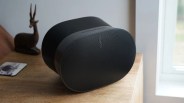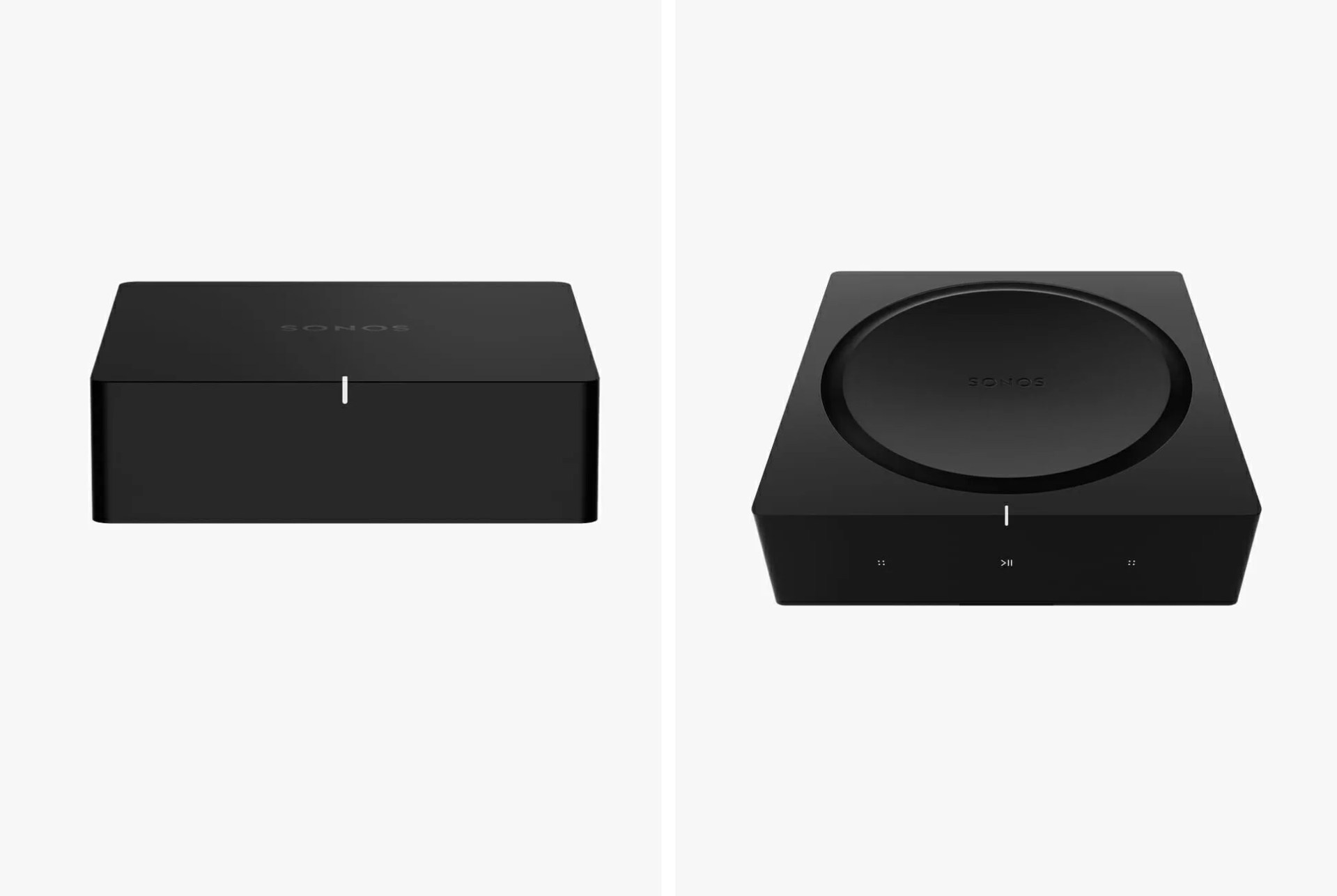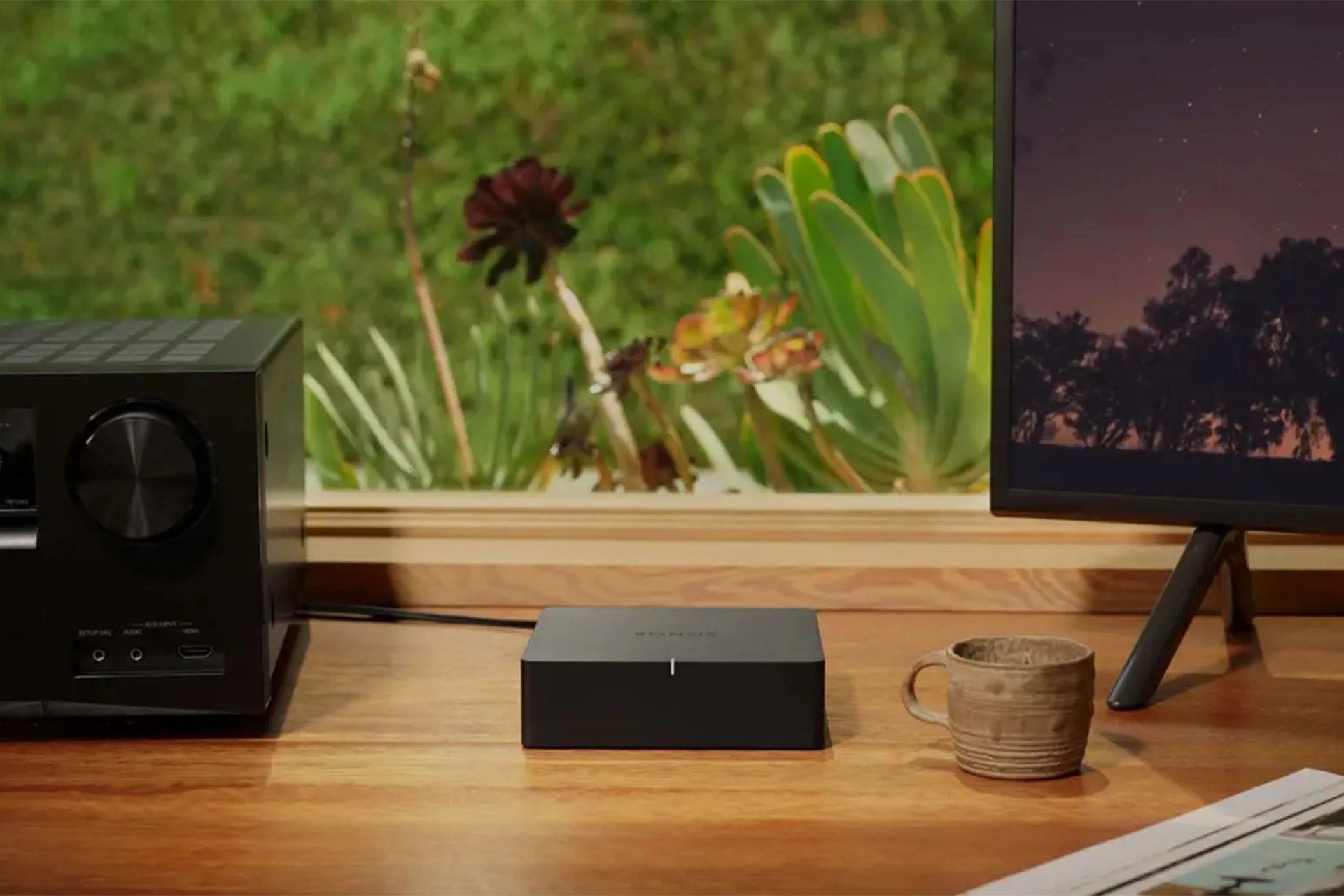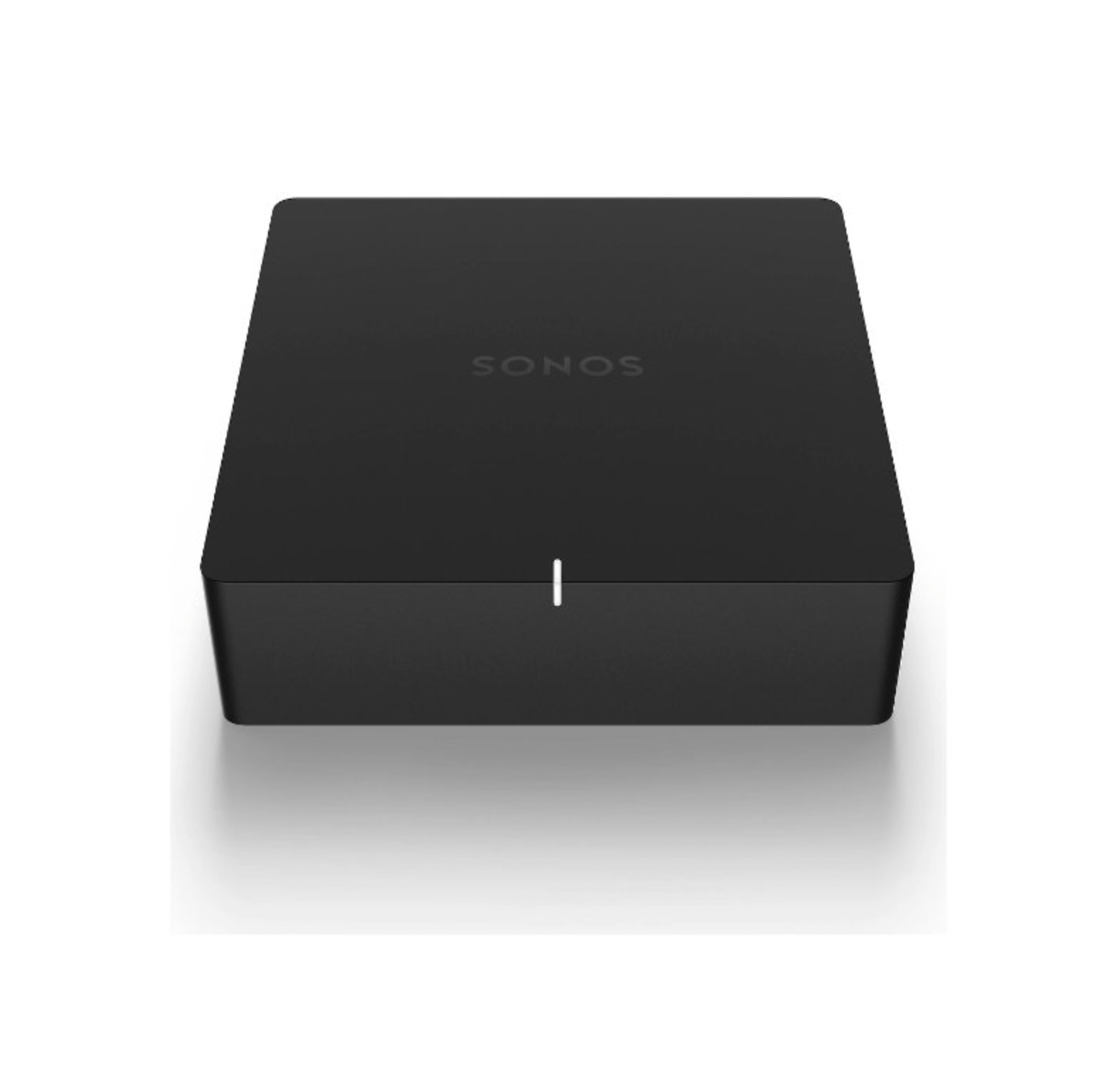If you have traditional audio equipment, like a receiver and a pair of bookshelf speakers, and you want to integrate it into your existing Sonos system, you want to buy the Sonos Port ($449). Released in early 2020, the Port is a newer and more versatile (and more expensive) version of the company’s Connect (now discontinued); it has a better built-in DAC, supports AirPlay 2 and, thanks to its bespoke all-black design, looks more like a typical audio component.
Products in the Guide
-
Sonos Port
Read more
Like the Connect, the Port is a wireless streamer with a built-in DAC. It has RCA and digital coaxial audio outputs for connecting a stereo or an AV receiver, and thus allows you to control and play music on that system via the Sonos app, just as if it were a Sonos speaker. The Port also has an RCA audio in port for connecting audio sources, like a turntable (with a built-in preamp) or CD player; this then allows you to play music from those sources on your existing Sonos speakers.
Maybe the most interesting upgrade is the Port’s 12-volt trigger, which gives it (and you) a little more control of the connected receiver or amp. It essentially eliminates the need for you to manually turn on the receiver or stereo, or switch to the proper inputs, because everything just turns on when you start streaming via the Sonos app to stream music. There’s a catch, however, and it’s only newer stereos and receivers that have a 12-volt trigger input. (My three-year-old Yamaha receiver didn’t support it, so I still have to use the receiver’s remote to switch inputs, unfortunately.)
It’s true that most newer audio components have built-in Bluetooth, so simply adding “streaming” to your stereo receiver on its own isn’t actually a big feature of the Port. However, the Port does have a fancy new digital-to-analog converter (DAC), compared to the Connect, and supports Wi-Fi streaming like Spotify Connect and AirPlay 2; so it’s going to stream higher-resolution and all-around better sounding audio than Bluetooth.





